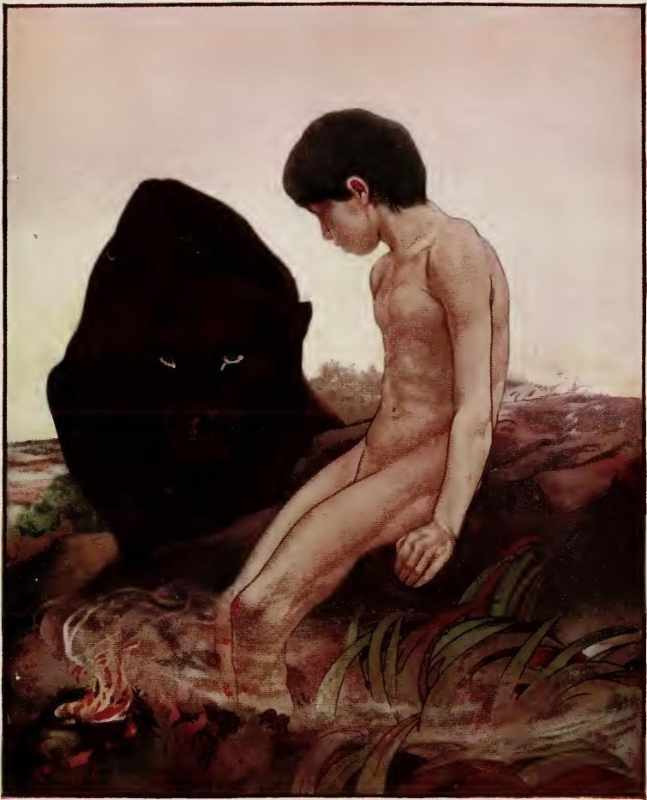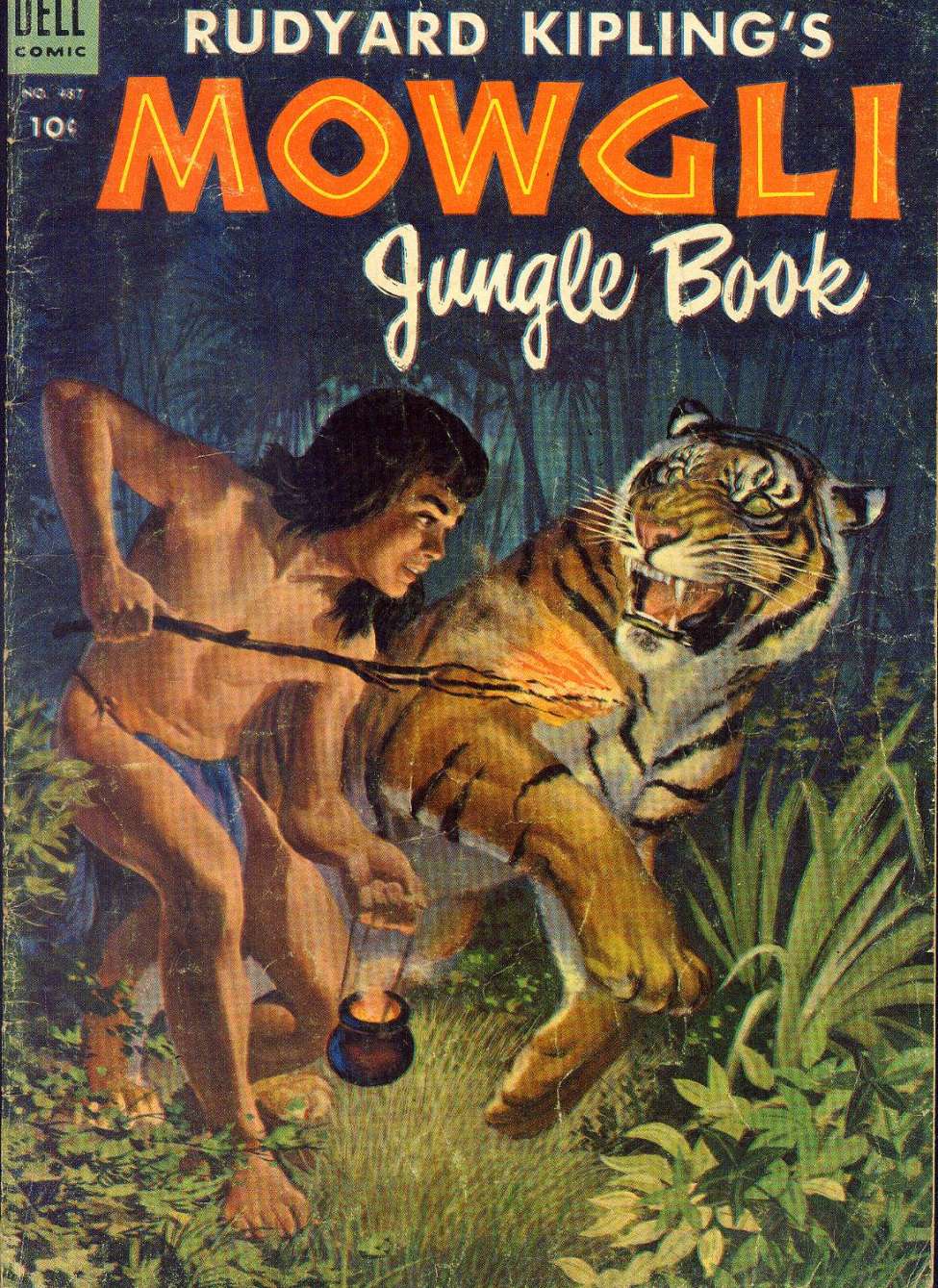Mowgli is a feral boy from the Pench area in Seoni, Madhya Pradesh, India, who originally appeared in Kipling’s short story “In the Rukh” (collected in Many Inventions, 1893) and then became the most prominent character in the collections The Jungle Book and The Second Jungle Book (1894–1895), which also featured stories about other characters. In the stories, the name Mowgli is said to mean “frog”, describing his lack of fur. Kipling later said “Mowgli is a name I made up. It does not mean ‘frog’ in any language that I know of.” “In the Rukh” describes how Gisborne, an English forest ranger in the Pench area in Seoni at the time of the British Raj, discovers a young man named Mowgli, who has extraordinary skills in hunting, tracking, and driving wild animals (with the help of his wolf brothers). He asks him to join the forestry service. Muller, the head of the Department of Woods and Forests of India as well as Gisborne’s boss, meets Mowgli, checks his elbows and knees, noting the callouses and scars, and figures Mowgli is not using magic or demons, having seen a similar case in 30 years of service. Muller also invites Mowgli to join the service, to which Mowgli agrees. Later, Gisborne learns the reason for Mowgli’s almost superhuman talents; he was raised by a pack of wolves in the jungle (explaining the scars on his elbows and knees from going on all fours). Mowgli marries the daughter of Gisborne’s butler, Abdul Gafur. By the end of the story, Mowgli has a son and is back to living with his wolf brothers. Kipling then proceeded to write the stories of Mowgli’s childhood in detail in The Jungle Book.
| Alias Mowgli |
| Real Names/Alt Names Mowgli |
| Characteristics Jungle Action, Wold Newton Universe, Realism and Victorian Age, Indian, Juvenile |
| Creators/Key Contributors Rudyard Kipling |
| First Appearance “In the Rukh” in Many Inventions (1893) |
| First Publisher ○ |
| Appearance List “In the Rukh” in Many Inventions (1893), The Jungle Book (1894), The Second Jungle Book (1895), Sixteen Illustrations of Subjects from Kipling’s Jungle Book (1903 portfolio) [Web], The Jungle Book Illustrated by M. & E. Detmold (1913) [Internet Archive] |
| Sample Read The Jungle Book [PG] |
| Description Mowgli is a feral boy from the Pench area in Seoni, Madhya Pradesh, India, who originally appeared in Kipling’s short story “In the Rukh” (collected in Many Inventions, 1893) and then became the most prominent character in the collections The Jungle Book and The Second Jungle Book (1894–1895), which also featured stories about other characters. In the stories, the name Mowgli is said to mean “frog”, describing his lack of fur. Kipling later said “Mowgli is a name I made up. It does not mean ‘frog’ in any language that I know of.” “In the Rukh” describes how Gisborne, an English forest ranger in the Pench area in Seoni at the time of the British Raj, discovers a young man named Mowgli, who has extraordinary skills in hunting, tracking, and driving wild animals (with the help of his wolf brothers). He asks him to join the forestry service. Muller, the head of the Department of Woods and Forests of India as well as Gisborne’s boss, meets Mowgli, checks his elbows and knees, noting the callouses and scars, and figures Mowgli is not using magic or demons, having seen a similar case in 30 years of service. Muller also invites Mowgli to join the service, to which Mowgli agrees. Later, Gisborne learns the reason for Mowgli’s almost superhuman talents; he was raised by a pack of wolves in the jungle (explaining the scars on his elbows and knees from going on all fours). Mowgli marries the daughter of Gisborne’s butler, Abdul Gafur. By the end of the story, Mowgli has a son and is back to living with his wolf brothers. Kipling then proceeded to write the stories of Mowgli’s childhood in detail in The Jungle Book. |
| Source Mowgli – Wikipedia |



